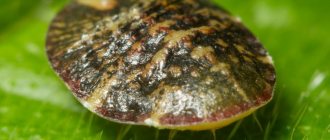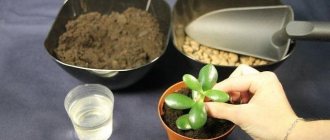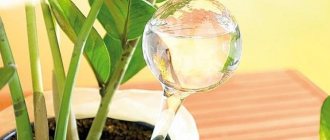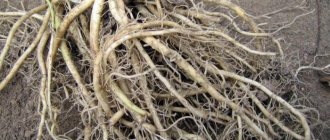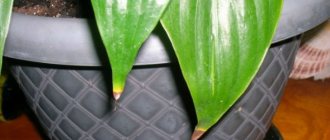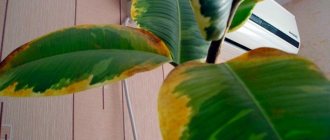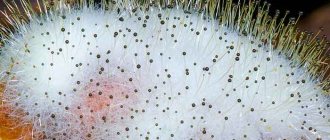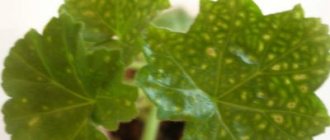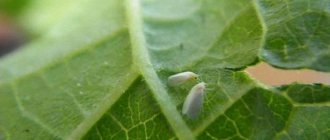Reasons for the appearance of a sticky coating on house flowers
If a sticky coating appears on the leaves of indoor plants, then you need to urgently look for the cause and eliminate it. In 90-94% of cases, stickiness on indoor flowers appears from various pests living on flower crops. The product of their vital activity covers the foliage in such a thick layer that an unpleasant substance begins to drip from the flowers.
A layer of sticky plaque, as well as white or brown spots on the green flowers, will “tell” about the presence of pests.
Where does the sticky layer come from:
- Sticky secretions and pinpoint marks are left by aphids and mealybugs;
- Scale insects leave growths and warts on the trunks of indoor plants;
- The stickiness on the underside of the leaf blades is caused by whitefly larvae;
- A sticky, thick white coating is created by spider mites.
Preventive measures
Preventing diseases is always easier than dealing with their consequences. Therefore, to prevent petunia leaves from becoming sticky, it is important to take care of proper care, as well as preventive treatments:
- You need to grow the flower in an open area or on a south, eastern window, since the plant loves light very much.
- Watering should be moderate - excess moisture provokes the development of rot.
- To prevent the leaves from becoming sticky, do not overuse fertilizers, especially nitrogen ones.
- It is better to plant flowers not too close to each other - the minimum interval is 25–30 cm.
- At the beginning of June, it is recommended to carry out preventive treatment with fungicides, for example, Bordeaux mixture, Fitosporin, Fundazol, Skor or other means.
Read more How it blooms and how to make petunia bloom
Scale insect - a dangerous insect
If the thyroid gland is active, then expect trouble. This pest is difficult to detect immediately.
How to destroy scale insects on indoor flowers
Useful advice from an agronomist
I am not a blogger from the twelfth floor, but a practitioner who has connected my entire life with my mother-nurse - the EARTH. I have something to tell you about the earth and everything growing on it
Ask a Question
Among the many pests of indoor flowers, a special place should be given to the scale insect, this inconspicuous plant killer that sucks the juice from the plant. She does not fly, does not crawl, and therefore we sometimes notice her very late. Only when we are already trying to understand why our pets are oppressed, do not grow, and sometimes simply die. How to often inspect the flowers in the house, find this pest, and how to deal with them - in this film. Look at it carefully
What do scale insects look like?
The adult insect is covered with a hard brown shield, under which hordes of eggs are hidden. The female pests bite tightly into the leaf and use their proboscis to draw juices out of the plant.
If the females sit motionless, then the males move from place to place, infecting the seedlings of the home greenhouse bush by bush. They themselves do not eat foliage, but they can move around and infect.
The scale leaves a sweet sticky trail or honeydew without a break to rest. Females are so fertile that they bear offspring 5-6 times throughout the year.
The tenacious insect does not rest even in winter. Colonies of the pest grow so quickly and abundantly that they can take over the entire home greenhouse. Even poisonous flowers are not spared.
How do they get into the house? They can fly through windows with the wind and get into a house with a plant that was purchased at a flower shop.
These pests are omnivores. They are ready to eat: palm trees, citrus fruits, bromeliads. Females happily live on orchids, lemons, ficuses, ivy, crassula, and cacti.
Causes
Typically, the disease develops under concomitant weather conditions and improper care of plants. The fungus itself lives in the soil. It does not manifest itself in warm and dry weather if the rules for caring for plants are carefully followed. But if conditions are unfavorable, entire fungal colonies develop, which very quickly infect the plant.
Fungi - parasites feed on the sap of the plant, leaving no nutrients for it. The causes of the disease are usually :
- Cool weather and high humidity. If there is also a shortage of sunlight, the conditions for healthy plant growth become extremely unfavorable.
- High nitrogen content in the soil.
- Frequent planting of plants, therefore, insufficient air circulation between them.
- The watering schedule is not followed. Don't water the plants too often. It is also unacceptable to over-water the plant after a long drought. These actions destroy the plant’s immunity, and, as is known, diseases most often affect weakened plantings.
When you find plants affected by powdery mildew in your area, it is important to remember that one of the ways the disease spreads is by transporting spores through the air.
When caring for plants, it is enough to touch a diseased plant and then touch a healthy one - powdery mildew infection occurs.
Mealybug
A white sticky coating, similar to a cobweb, is a sign of the formation of a clutch of mealybug eggs. The parasite lays a large number of eggs under the web.
What does an insect look like?
An adult female, no more than 5 mm long, comes in pink, white, and beige colors. Along its body there are small bristles covered with a white powdery coating.
To immediately notice that something is wrong, pay attention to whether sticky drops appear on the plant. This is the first stage of infection of a green pet.
Next, a sticky white coating forms, resembling pieces of cotton wool. At the last stage of infection, a change in the shape of flowers and leaves occurs. The leaves take on a marbled color and are covered with spots of red or yellow.
When leaf blades change, photosynthesis is disrupted and the plant dies.
The reasons for the appearance of this pest: dry air, temperatures above plus 20ºС, unfavorable conditions for development. Most often, the pest multiplies in winter, when there is a lack of lighting, dry air, and excessive watering, leading to stagnation of water in the soil and pan.
The most dangerous phenomenon in winter is waterlogging. Too much water in the soil leads to rotting of the roots, the appearance of parasites and microbes. When watering, you should pay attention not to the interval between waterings, but to the condition of the roots.
Spraying against powdery mildew
Before spraying, be sure to do the following:
- remove all infected, yellowed and lost elasticity leaves and affected buds;
- remove the top layer of soil and add treated, disinfected soil;
- spray the bushes with a store-bought preparation, for example, topaz or foundationol;
- when spraying with the solution, all bushes must be completely treated;
- To be on the safe side, you can dip the petunia bushes into a container with the medication for treatment.
Treatment of petunia by spraying is usually used if you need to get rid of a false disease. The following preparations are used for spraying:
- polycarbacin;
- a mixture of milk and iodine - you need to dissolve 10 drops of iodine in one liter of milk, after which this mixture is mixed with 10 liters of water. The resulting liquid must be sprayed onto the flowers several times. Many gardeners say that this remedy helps quite quickly;
- copper oxychloride.
These drugs can be freely purchased in stores. By spraying with them you can get rid of white plaque.
What to do if the leaves become sticky
What measures to take if a sticky coating appears on an indoor flower? First of all, you need to inspect the seedling. Sweetish drops may also appear on healthy plants during flowering. This natural function is needed to attract pollinating insects. After flowering ends, the drops will disappear.
Gum disease can affect citrus and other flower crops, even without pests appearing on them.
If an amber sticky liquid appears on the foliage and bark of citrus fruits, the cause may be excess nitrogen, damage to the trunk, fungi, or improper planting.
Sticky droplets can appear on branches, buds and leaves of other indoor plants. You just need to change the fertilizing and maintenance conditions, and treat the fungus with fungicides.
But if scale insects or other pests have taken a fancy to your plant, then you need to urgently take action.
Controlling sticky pests
Any diseased plant should be sent away from the greenhouse, and other crops should be examined. Infected seedlings should also be quarantined.
Treatment of an infected bush:
- Wash the flower with hot soapy water, dissolving a piece of laundry soap in it.
- After washing off the honeydew and some of the insects, rinse the window and windowsill, and wash the curtains. Parasite larvae may also remain here.
- Buy “green” soap at a flower shop, beat it into a thick foam, and carefully wipe the leaves with a sponge soaked in a soap solution.
- There is no need to wash off the soap right away. After 15 minutes, rinse the plant under a hot shower, then dry in a warm place.
What to do with brown scales
What to do with adult female scale insects? They look like brown scales or bumps, settling on the trunk in the most inaccessible place.
How to remove pests:
- First you need to cut off all diseased leaves and branches of the seedling;
- Use a cotton swab dipped in alcohol to remove any insects that can be reached;
- Pour 10 ml of alcohol into the solution (beat 20 g of laundry soap in 1 liter of water);
- Use a cotton pad to distribute the prepared solution over the scales;
- Next, rinse the leaves with the solution, top and bottom, especially along the veins;
- This treatment of the plant must be carried out 3 times every 10 days. After this treatment, the scale insect should disappear.
Important! Insects should not be removed by hand. Damage the scales and the population will multiply at lightning speed.
What kind of disease is this? Where does it come from?
Powdery mildew (powdery mildew, ash) is caused by parasitic fungi. Mycelium develops on the aboveground part of the plant: leaves on both sides, stems, buds. The plaque on a diseased plant resembles flour or white dust (hence the name). In some cases, the leaves turn yellow and curl. After the mycelium ripens, microscopic droplets of moisture appear on the surface of the leaves and shoots, and the leaves become sticky to the touch.
Mushrooms, capturing all new surfaces of the plant, feed on its juices, significantly weakening the petunia. The flower may not die immediately, but it loses its visual appeal and flowering becomes scarce. It usually takes the fungus 5 to 8 days to completely engulf the plant.
Bushes infected with powdery mildew themselves become breeding grounds for infection, with which the fungus spreads further throughout the flower garden.
Spores of pathogenic fungi persist in soil and contaminated plant debris. They also spread through the air. There is a pattern: the more moisture in the atmosphere, the easier and faster the spores spread.
@Regents of the University of Minnesota
Factors that contribute to the spread of powdery mildew:
- air humidity is above 60%, and the average daily temperature is no more than 18 degrees;
- excess moisture in the substrate in which petunia grows;
- excessive fertilizing with nitrogen fertilizers;
- dense soil structure, its high acidity;
- dense planting of flowers, as a result - poor ventilation of the bed;
- the soil was not disinfected before sowing flowers;
- The plants were cared for with tools containing fungal spores.
Plant damage begins with leaves growing close to the soil.
Chemicals
After treating with a soap solution, you can finish the fight with the help of chemicals. They act more effectively in May-July, when the females are still without protective shields. The best preparations for spraying: Fitoverm, Aktara (KS, VOP).
Processing stages
- After spraying with insecticide, the flower should be covered with a bag and left for 40 minutes.
- Then rinse the seedling in the shower to remove the chemical and dead individuals.
- After 2 weeks, repeat spraying to destroy hidden beetles.
- Check all indoor flowers regularly using a magnifying glass.
Efficiency of Aktara
"Aktara" is a new generation insecticide. It has characteristics such as high efficiency and versatility in use.
This drug is toxic, so all precautions must be taken when using it. It is especially dangerous to inhale the vapors of this product. While working, you must wear gloves, a protective mask and goggles.
If home vegetation is attacked by parasites, then “Aktara” will help cope with them.
"Aktara" is a fast-acting insecticide with enteric contact action. The product is available in granules and suspensions. Its substances have a detrimental effect on many insects.
Advantages of "Aktara":
- It has a high degree of absorption, so the drug is capable of destroying more than 100 types of pests;
- The impact on pests is rapid. After an hour, you can notice the death of the parasites;
- Plants can be treated at any time and in any weather;
- The drug can act for 1 to 2 months;
- Without accumulation effect, therefore does not harm crops.
Disadvantages of Aktara:
- Harmful to bees, wasps, hornets;
- It is not recommended to store in a diluted state.
Dilute the drug only according to the instructions. Treat only trunks, leaves and roots, avoiding flowers and ovaries. After treatment, the flowers should stand for 24 hours, preferably under a bag. Dilute the product only with warm water.
If pests have dug into the root zone, then watering with Aktara will help protect the entire plant. The root system will begin to promote the drug substances throughout all cells of the culture, and the parasites will quickly become saturated with poison.
“Aktara” will destroy their digestive tract, as a result the nerve endings of the parasite will be paralyzed, so the insect will no longer want to suck the juices from the plant. Without food it will soon die.
Prevention measures
To prevent the appearance of powdery mildew on petunias, follow these rules:
- seedling soil and soil in the flower garden before sowing (planting seedlings) are spilled generously with a solution of Maxim or Fundazol, a strong solution of potassium permanganate;
- water the plants moderately, only with warm water;
- do not allow thickening of plantings;
- between waterings, loosen the soil, sprinkling the surface with ash;
- do not use infusions of litter and manure for fertilizing, giving preference to mineral fertilizers;
- regularly inspect the leaves to detect fungal mycelium.
In damp and cool summers, it is useful to treat the flower garden 3-4 times per season with biological antifungal drugs: Fitosporin, Alirin B, Gamair, Trichodermin.
Elena Chursinova A practical gardener with twenty years of experience. I prefer organic farming and lazy gardening. ...
Why sticky plaque is dangerous for indoor plants
If the leaves become sticky, take immediate action. First of all, armed with a magnifying glass, inspect the plant. Perhaps there are dangerous parasites among the foliage.
Let's look at leaf diseases and treatment of different flowers.
Sticky leaves on an orchid
Owners of orchids strictly monitor the health of their pets, but these luxurious flowers are also attacked by pests. Sticky leaves on an orchid may indicate a mealybug infestation.
To prevent the orchid from being affected by scale insects, it is necessary to perform the following actions:
- Inspect flowers frequently;
- Create favorable conditions, that is, illuminate and humidify the air in winter by placing a bowl of water next to the flower;
- Wipe the orchid leaves with a solution of laundry soap;
- For transplantation, buy an uncontaminated substrate or disinfect it after purchasing it at home;
- Dry the homemade bark for 15 minutes in the oven at 60 ℃.
- Cut off affected leaves and flowers.
Often sticky drops of nectar appear on the leaves of the orchid. This is a natural process, the flower seems to “sweat”. Drops are simply washed off with water.
Other reasons for the appearance of stickiness on leaf blades: excessive watering, excessive fertilizing, infection with scale insects or aphids.
Phalaenopsis orchid
Flowers of the Phanelopsis variety are distinguished by a variety of colors, and therefore are in a special place among gardeners. In the process of growing phalaenopsis, many problems also arise that cause anxiety to the owner. One such problem is sticky spots on leaves.
Stickiness is a distress signal, or it may be a natural process. As a flower grows, moisture moves through the plant, forming nectar. Thus, the leaves of the phalaenopsis are covered with a sweet substance or nectar.
Droplets on leaves attract pollinators or ants. In nature, ants are excellent at destroying aphids, so the sticky coating is useful for this crop.
Sweet nectar also serves as a trap for harmful microorganisms. Getting entangled in the sweet substance, they simply die.
Reasons for the appearance of nectar:
- Excessive watering;
- The accumulation of moisture in the pan or in the substrate causes the plant to emit evaporation;
- Low temperature;
- Excess fertilizing with phosphorus, potassium and nitrogen.
Oversaturation with fertilizers and moisture leads to the release of excess sugars. Even this seemingly natural process can have a detrimental effect on the health of the flower. Dark spots appear on the leaves, which interfere with photosynthesis. To save a blooming pet, it is necessary to completely replace the substrate, otherwise the death of the flower rosette and the flower stalks themselves will occur.
The nectar that appears on the leaves of the flowers can be wiped off with a wet sponge and put the flower in the shower. It doesn’t hurt to take a good look at each leaf under a magnifying glass so as not to miss pests.
Ficus
If this large indoor flower gets sick, sticky leaves will be the first symptom of the disease. Stickiness just confirms the presence of pests attacking the flower crop.
Let's consider the reasons for the appearance of a sticky substance on the ficus. Ficus can be affected by spider mites. If the leaf blades are covered with white dots, and the rest of the ficus is covered with a thin cobweb, then start fighting spider mites. Spider mites develop quickly in dry air and high temperatures.
But thrips can also cause sticky leaf blades. These pests are very similar in appearance to small flies. They feed on plant sap and live in large colonies. By sucking the sap of a plant, they can destroy it.
Scale insects and aphids can also attack ficus plants. If your ficus has sticky leaves, don't rely on luck. Without eliminating pests, the problem will not be solved.
Drugs such as Actellik, Vermitec and Flumite will help get rid of spider mites. To completely destroy the insect, 3 treatments will be needed at intervals of 5-7 days. Thrips are killed by the same insecticides as spider mites.
The ficus benjamina also produces sticky leaves. If there are few insects, then it is enough to wipe the ficus leaves with a sponge dipped in a soap solution.
Large colonies and scale insect larvae die after treatment with an insecticide, for example, Actra. It will be necessary to treat the diseased seedling three times, allowing an interval of 7 days between treatments. In order for the pests to die, after treatment the plant must be covered with a bag and kept under cover for a day.
Important! After destroying the parasites, the Ficus Benjamin needs to create better conditions: increase lighting, raise the temperature and humidity, establish the correct watering regime so that the pests do not return.
Begonia
Begonia is a favorite flower of many gardeners. Begonias and sticky leaves don't seem to go together. But it can also be attacked by the same pests.
Begonia can be destroyed by pests such as thrips, scale insects, and spider mites. The appearance of pests can be noticed by changes in the stem of the plant. It begins to shrink and age quickly. At the same time, the state of the begonia does not confirm the presence of parasites: the leaf is shiny, the color is lush.
Thrips are the most dangerous for begonias. To get rid of this parasite, many gardeners cut off clean, uninfected shoots from the plant, wash it with water, root it and plant it in a clean pot. The mother bush can also be saved by treating it with Fitoverm.
Anthurium
A blooming anthurium brings many pleasant moments to its owner. It blooms with incredibly attractive flowers of pink, white, bright red, and purple.
Often this flower is attacked by various parasites, affecting the beautiful leaves. White sticky coating, dark or light spots, cobwebs under the leaves - all this indicates that the flower is damaged by pests.
If you wash the tops of the foliage and under the leaves with a soapy solution, most of the insects will be removed. If the disease is advanced, more stringent measures will have to be taken.
The plant can be saved from aphids using a folk remedy: leave 15 grams of chopped onion or 6 grams of dry scales in 1 liter of water for 5 hours. Spraying is carried out three times, with an interval of 5 days.
In advanced cases, you will have to treat with Fitoverm, Actellik, Karbofos, Biotlin. Treatment with Fitoverm will save you from thrips and spider mites.
Chinese rose
The lushly blooming Chinese rose is a real decoration of a home greenhouse. Flower growers treasure this beautiful flower. One of the unpleasant aspects of breeding is the appearance of sticky leaves on Chinese roses.
There is no need to despair; it is worth understanding the reasons for the stickiness of the leaves. A careful inspection of the flower crop will help eliminate or detect pests. A sticky coating is created by aphids, scale insects, and whiteflies.
If parasites are found, then they must be combated with the help of chemicals. You will have to treat both the plant itself and the soil.
If no parasites are found, but there are still sticky drops, it’s worth looking into this phenomenon. Often, especially in hot weather, small sticky droplets appear on the back of Chinese rose leaves. They usually appear after watering during hot periods. The plant seems to “sweat”. This is a normal natural phenomenon.
The unpleasant thing is that drops of nectar drip and stain everything around. How to get rid of this phenomenon? You can get rid of it if you give the plant “bathing” under a hot shower more often. It has been noticed that the rose loves water treatments!
It's worse when pests are discovered. If brown tubercles are found on the trunks, then these are sucking insects - scale insects and false scale insects draw sap from the plant.
The leaf under the scale is lighter than the rest of the leaf blade. This sign can also help identify the parasite.
Mealybug - also leaves stickiness and spoils the plant. It looks like a fluffy, round insect, and when crushed it releases an orange liquid.
Thanks to the waxy coating, the bug is protected from the effects of contact drugs. It must be combated with intestinal drugs.
Treatment with Aktara will help get rid of these pests. Dissolve 4 g of the product in 5 liters of water, spray the flower, and then spill the soil with this solution: 1 g per 10 liters. Carry out the treatment 4 times with an interval of 7-10 days.
If the plant is not neglected, it will require treatment (after 1-2 days) with acarin, agravertine, and fitoverm.
Citrus
Growing citrus fruits is not just fashion and delicious fruits, but also purifies the air in the apartment.
Much to the regret of many flower growers, indoor lemons are plagued by harmful insects, whose activity causes a sticky coating to appear on the trunk and leaves.
Sometimes indoor lemons have sweet droplets on the leaves, as if syrup had been sprinkled on it. One of the reasons is considered to be excessive watering. Lemon should not be watered so much that the soil is always moist.
If watering is adjusted, and stickiness appears on the lemon leaves again, then look for scale insects. This insect can blend so well with the bark of a lemon tree that you won’t immediately notice it.
Signs of scale insect infestation:
- dry spots of brown color;
- sticky coating on the trunk and foliage of a tree.
Scale insects most often attack weakened young trees. It is necessary to feed citrus seedlings with complex fertilizers 4 times a year.
If you do not get rid of this insect, it will quickly increase its habitat area. But spraying with chemicals can cause the fruits of the current and next harvest to become poisonous and cannot be eaten.
Therefore, insects must be detected as early as possible and sprayed with less aggressive means:
- Dilute 10 ml of 70% alcohol and 15 ml of laundry soap in 1 liter of water;
- Protect the soil from contact with the solution;
- Apply the product directly to the affected areas.
If the scale insects have not disappeared, then every 3 days you will have to spray with “Confidor” or “Aktar” until the pest completely disappears. When spraying, pay attention to the root zone and the underside of the leaf blades.
The harvest of this year, as well as the next season, cannot be eaten.
Warmth and high humidity can attract whiteflies. It is signaled by a white coating on the foliage, similar to mold. Wipe the leaves with a sponge dipped in soapy water.
Spraying with a sweet solution works well. For 1 glass of water you will need 2 tbsp. spoons of sugar. A week after the sweet spray, put the lemon in the shower.
Try to get rid of mealybugs by rubbing the stems and leaves with garlic infusion: crush 6-7 cloves of garlic and pour 0.5 liters of hot water, leave for 4 hours.
Mandarins can also be attacked by sucking insects. The treatment is the same as for lemon. And it is best to carry out preventive measures: often examine the trees under a magnifying glass, arrange a hot shower, and create favorable conditions for growth.
Calathea
The calathea flower attracts attention with its beautiful large leaves. But sometimes sticky streams appear under the leaves. This is a warning sign. Perhaps the flower was attacked by dangerous pests: scale insects or spider mites.
Due to the fact that the flower has large leaves, you can limit yourself to wiping them with a sponge dipped in a solution of laundry soap.
The most dangerous pest for calathea is the spider mite. It can be detected by a dense white web and the appearance of white spots on the leaves.
It attacks calathea if the air in the room is too dry. Therefore, it is necessary to achieve normal air humidity. Place a container of water near the flower, arrange a shower, and wipe the leaves on both sides more often.
Ways to eliminate drops
Sticky stains can be simply washed off with water, but this will not stop them from appearing again. To get rid of them, it is necessary to take measures to optimize the conditions for keeping the orchid, since the root of all troubles lies precisely in this. Glucose releases and the appearance of pests are the result of improper agricultural practices.
Conditions for keeping orchids
As diverse as the world of orchids is, so diverse are the conditions that favor their growth and development. But for this, a balance must be maintained: solar energy + temperature + water = oxygen + glucose.
Lighting
Light for orchids is the main component of obtaining energy for photosynthesis. The required intensity, depending on the type, ranges from 15,000 to 30,000 lux. The length of daylight hours also plays an important role. Each orchid has its own light border. If the lighting is higher, it develops; if it is lower, then it sleeps.
Temperature
According to air temperature requirements, orchids are divided into 3 types:
- Warm - prefer from +20°C to +35°C. These include Vandas and some species of Cattleyas.
- Moderate – from +16°С to +28°С. Among the widespread ones are Phalaenopsis, Dendrobium, Cambria, Cattleya.
- Cold – from +10°С to +20°С. These include Cymbidiums and rock Lelias.
If it is disrupted, photosynthesis slows down or stops completely. This leads to loss of immunity.
Watering
Water is the third component of orchid health. But if the supply of moisture to the plant does not meet its needs at the moment, this will lead to the death of the orchid. It is very important that the ratio of light, temperature and water are in balance.
In bright sun and high temperatures, an orchid that is in the active growth stage is able to recycle all the water that it received during watering. But if there is not enough light for her, it is cold, and she is “sleeping,” then excess moisture will lead to a disease such as powdery mildew.
In addition to these main 3 factors, the appearance of sticky drops is influenced by:
- air humidity;
- poor room ventilation;
- overfeeding with nitrogen fertilizers;
- hard water.
Air humidity should correspond to, or be slightly lower than, that which promotes the growth of the orchid: the higher the temperature, the higher it should be.
Feeding
Many beginners mistakenly believe that in order for an orchid to grow faster, it must be fed intensively. Such “efforts” more often lead to the opposite result. This is especially true for nitrogen fertilizers.
If the plant is oversaturated with this substance:
- tissues soften and crack;
- The flowering period becomes shorter;
- immunity is lost, the orchid gets sick more often;
- more often exposed to pest attacks.
To prevent this from happening, orchids should be fed with balanced fertilizers marked “For orchids”. This is done in the spring and summer.
How to define a disease?
On petunia leaves, powdery mildew appears as a white coating (and about what to do if petunia leaves have a coating on them or they become sticky, and why this happens, read here). At the initial stage of the disease, it looks more like someone lightly dusted the leaves with flour or powdered sugar. But once the leaves are affected, the disease quickly spreads to flowers and buds.
Powdery mildew infection progresses very quickly, infected leaves turn yellow and fall off (read more about what to do if petunia leaves turn yellow and why this happens here). Even if new leaves manage to grow on the plant, they look twisted and extremely painful. In just two days, the disease can affect an entire planting of petunias. If treatment is delayed, the plant dies.
You can read more about diseases and pests here.
